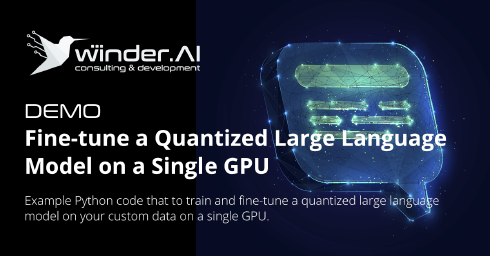Fine-tune a Quantized Large Language Model on a Single GPU (Falcon-7B)
- Published
- Author
 Dr. Phil WinderCEO
Dr. Phil WinderCEO
This notebook demonstrates how to fine-tune a state-of-the-art large language model (LLM) on a single GPU. This example uses Falcon-7B because it is Apache licensed. The data used in this notebook is for informational purposes only, do not use this data unless you have licensed it.
Read more






